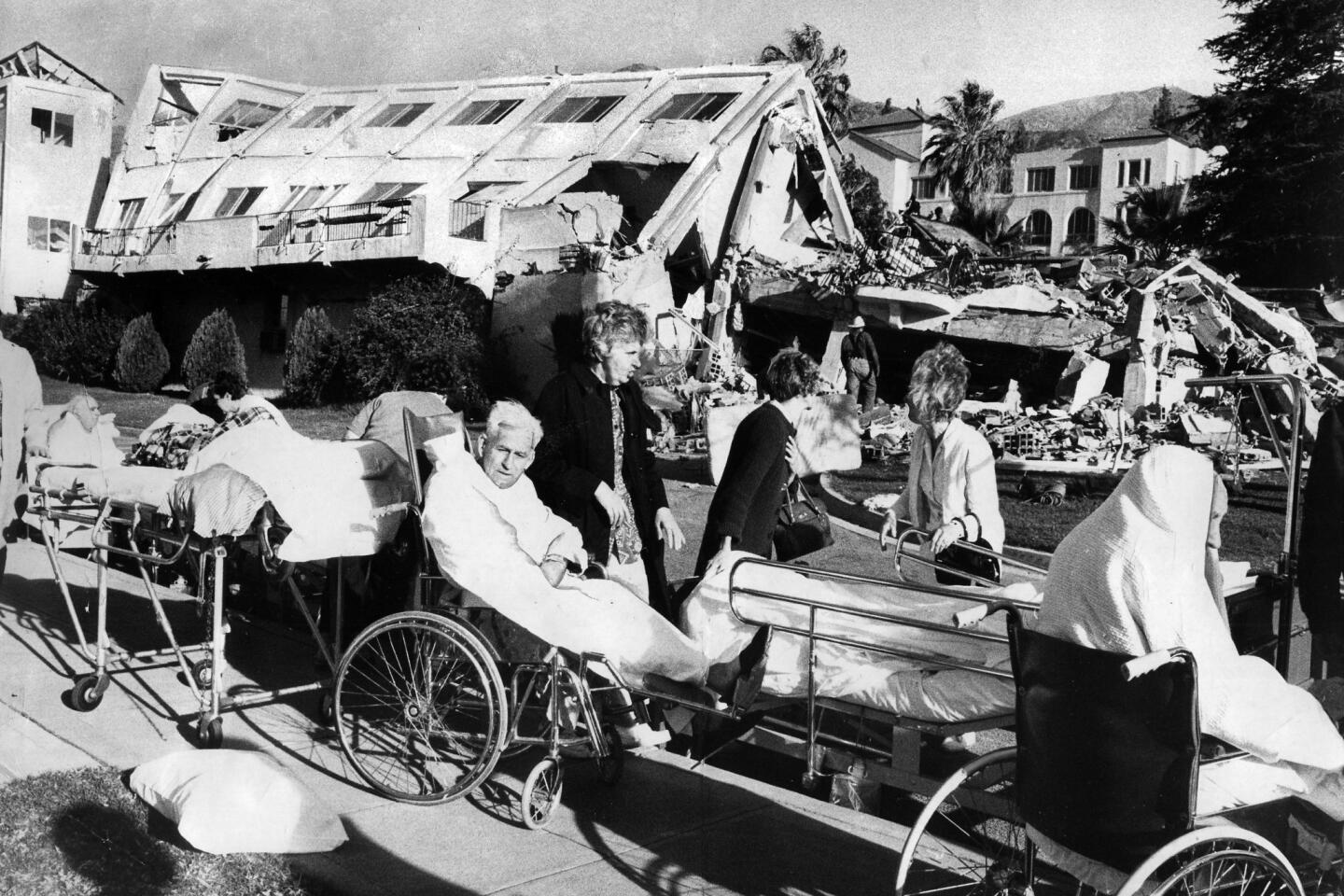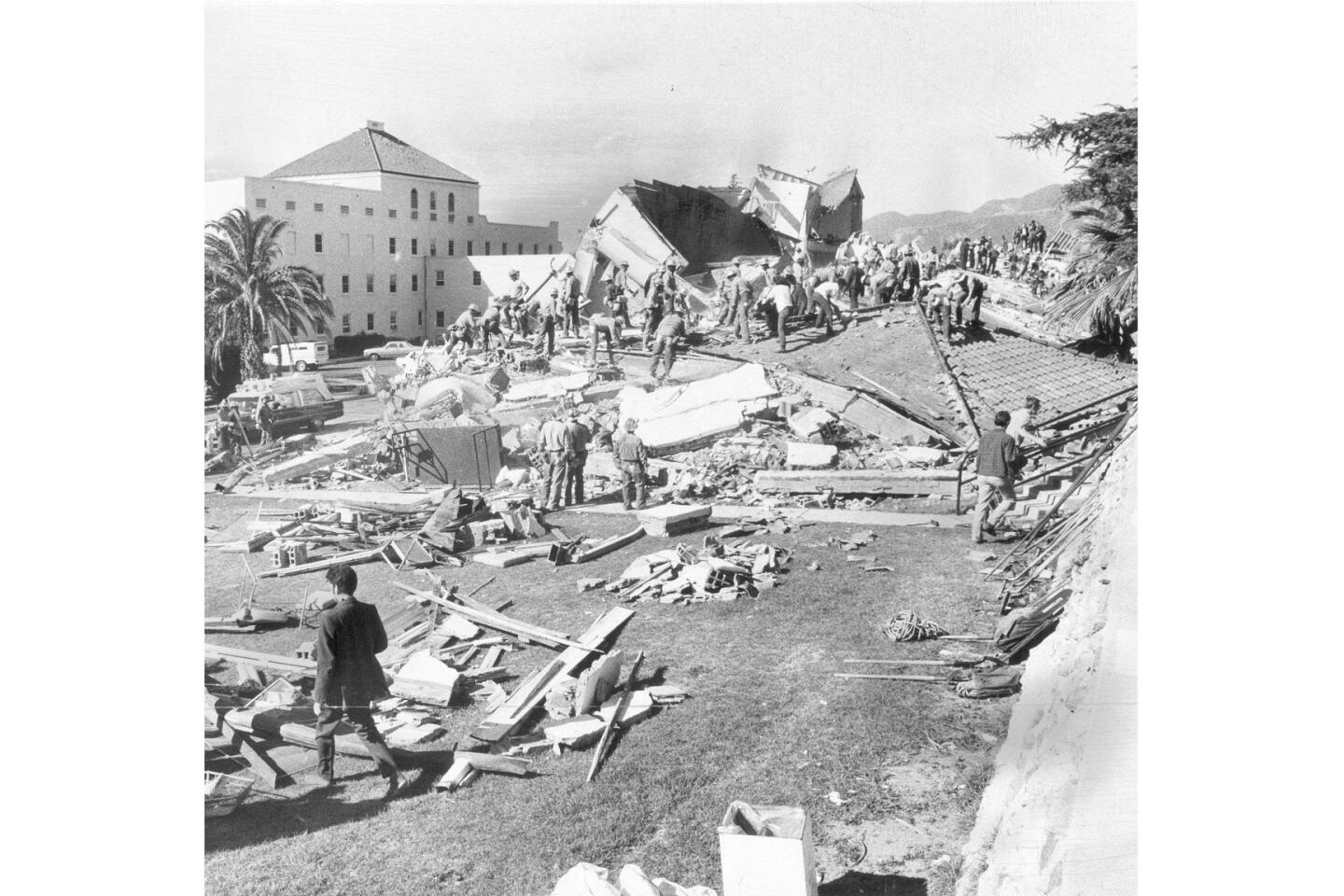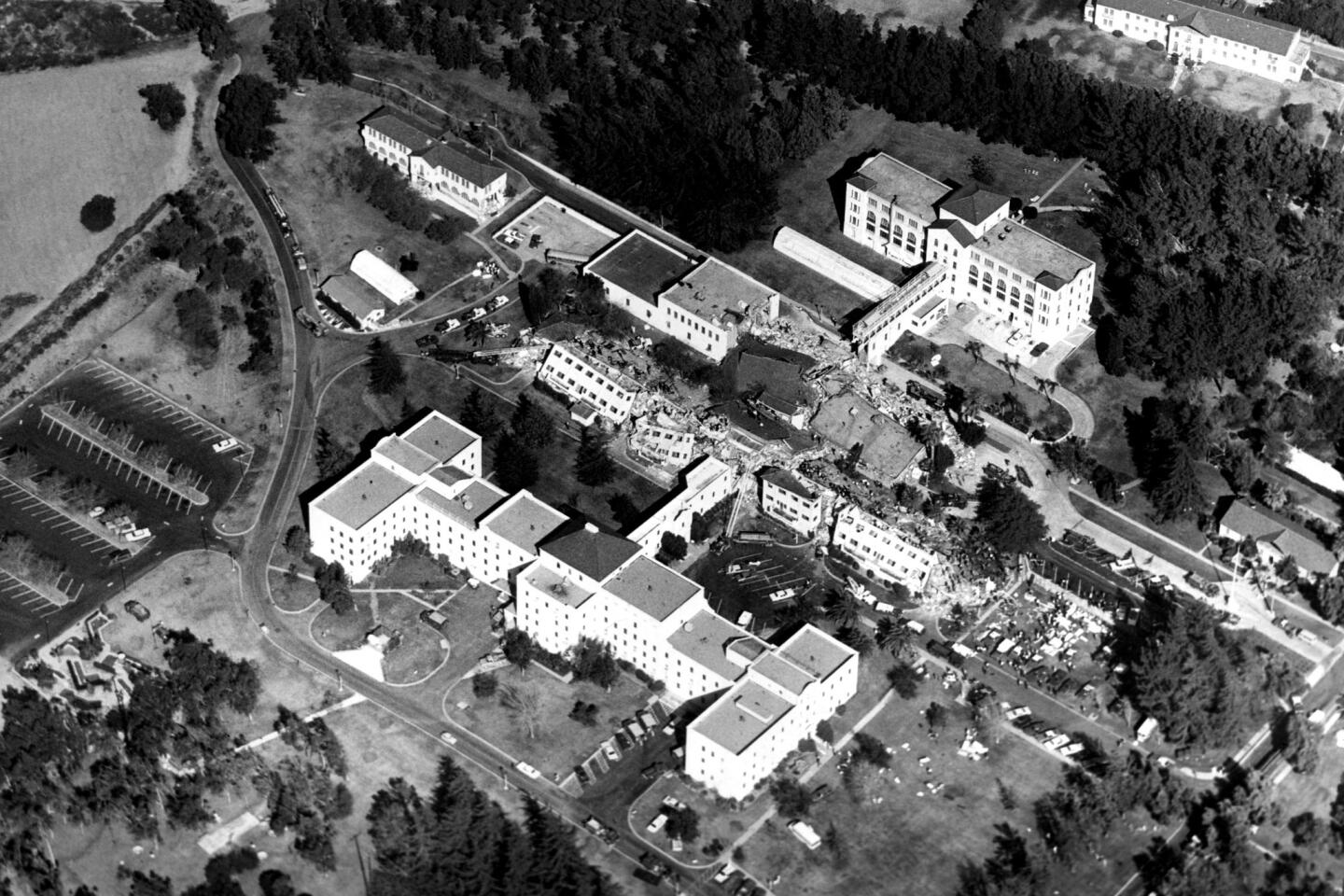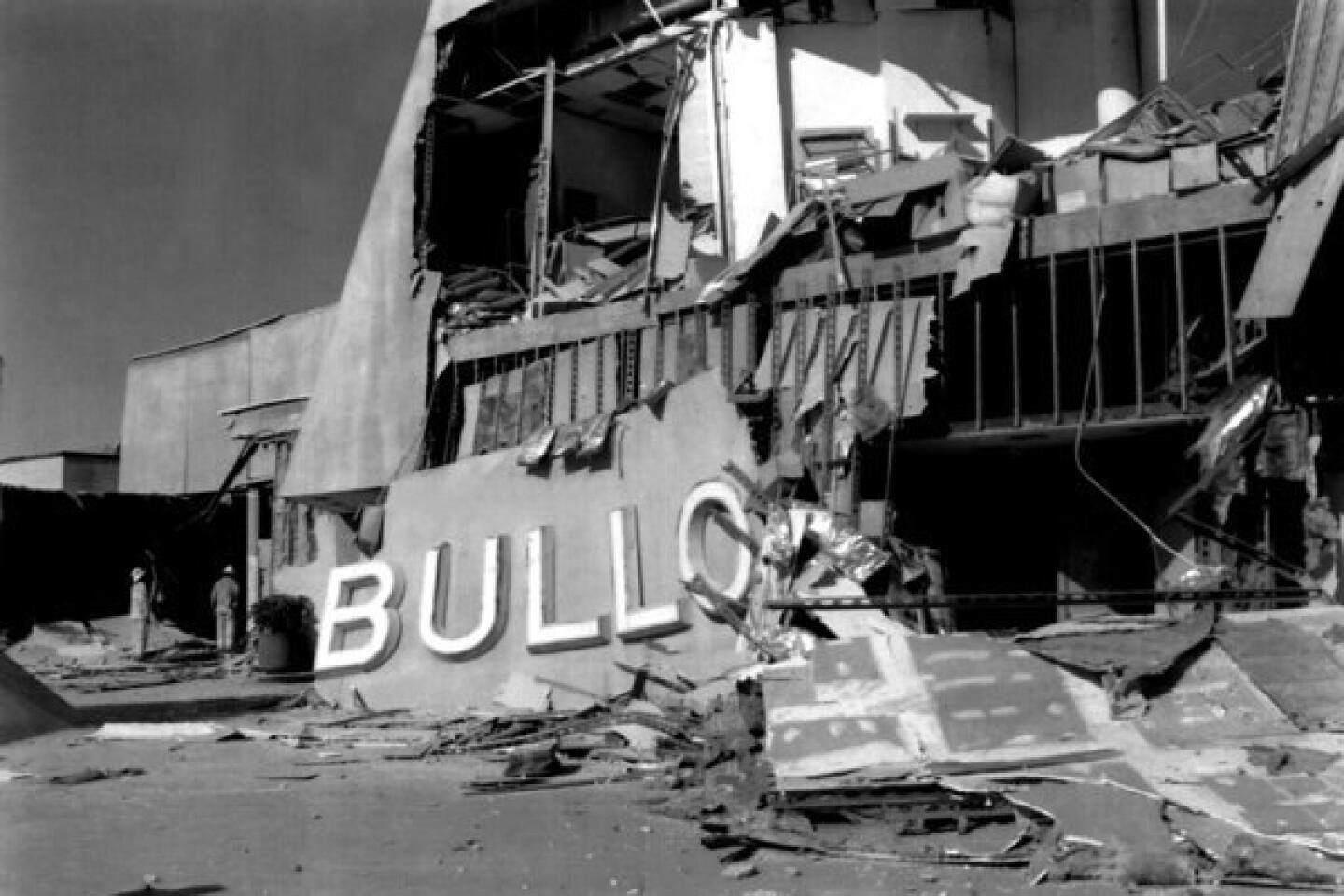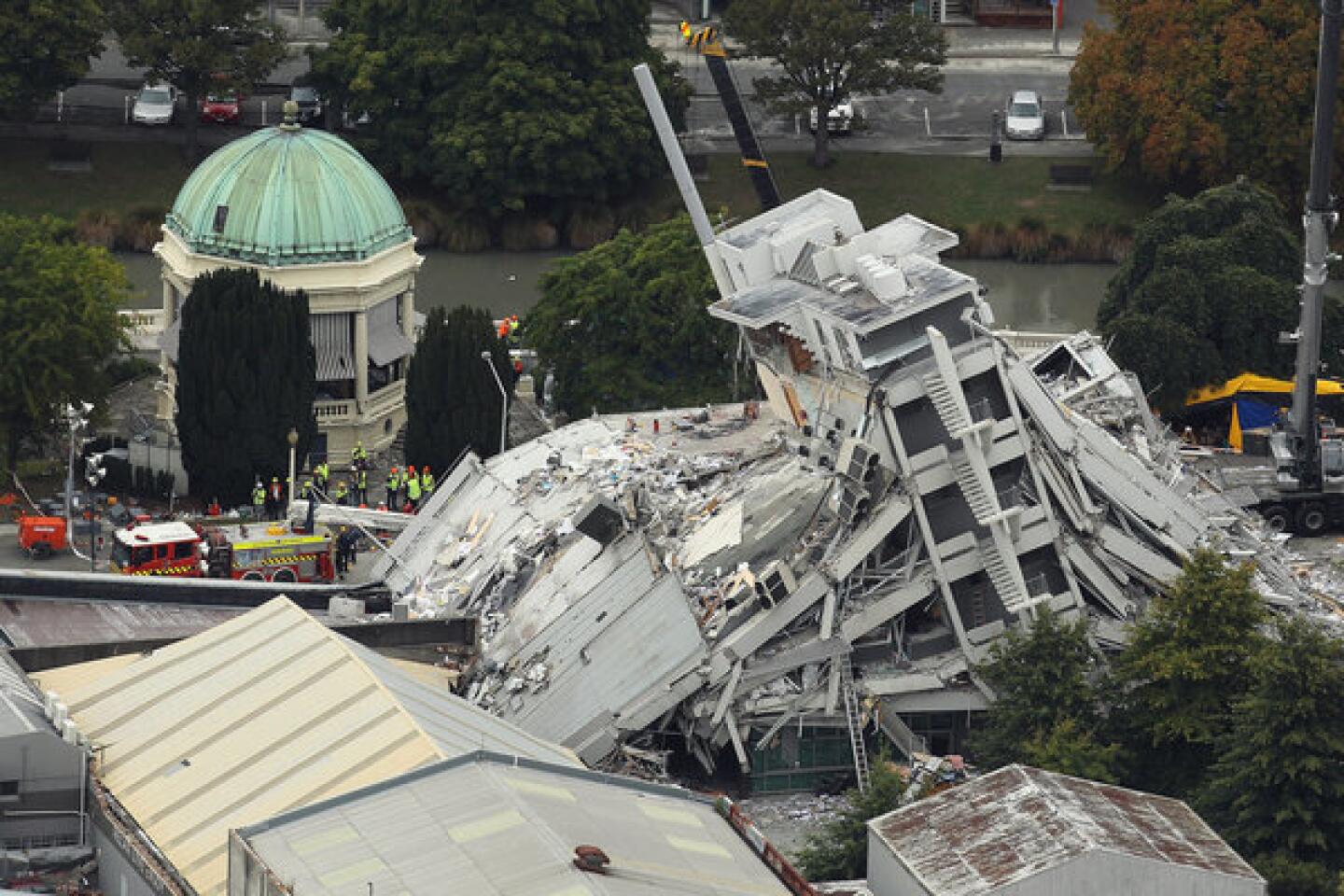L.A. Panel Backs Voluntary Quake Retrofitting
The city’s efforts to prevent future earthquake damage suffered a setback Tuesday when Los Angeles building officials recommended that new retrofitting standards for thousands of the city’s most vulnerable buildings be imposed on a voluntary basis.
A package of standards, based on the experience of the Northridge earthquake, would require strengthening the frames and foundations of about 80,000 buildings, including industrial and commercial structures, apartments and hillside and older wood-frame houses.
A City Council committee has recommended that the full council impose the standards on a voluntary basis, at least until the city can complete a two-year survey to identify all the city’s structures that need upgrading.
Building officials are seeking an estimated $2.4 million in federal funding for the survey. Even once the survey is completed, building officials said they won’t recommend making the standards mandatory unless the city can provide financial assistance to help building owners pay for the upgrading.
“These are tough economic times and you have to find financing,” said Karl Deppe, assistant chief of the Department of Building and Safety’s building bureau.
The decision brought expressions of disappointment from engineers who specialize in earthquake safety, but a sigh of relief from apartment owners.
The standards were proposed after building officials and seismic safety experts studied the damage on hundreds of homes and businesses after the Northridge earthquake. They cover about 1,200 older concrete buildings, 20,000 apartments, 1,000 so-called “tilt up” concrete buildings, about 7,000 hillside dwellings and 50,000 older, single-family houses.
The council’s Ad Hoc Committee on Earthquake Recovery endorsed the recommendations by building officials, but Councilman Hal Bernson, who heads the panel, said he did so reluctantly because he fears some building owners won’t make the upgrades unless they are forced to do so.
“I’m disappointed that we are going to have to delay making this mandatory,” he said.
The full council, which is expected to consider the recommendation in the next two weeks, is likely to follow the committee’s lead.
City officials acknowledged that requiring any new seismic upgrading is likely to generate opposition from many owners. Still, they insisted that this will not keep them from eventually making the standards mandatory.
“I will get the most political pressure from this, yet I’m the most motivated to do it,” said Bernson, whose northeast San Fernando Valley district was hardest hit in the Northridge quake.
Deppe said his department is resolved to impose the standards on a mandatory basis eventually, but is moving cautiously so as not to impose costs that property owners can’t afford.
“We know that these standards will improve safety,” he said. “It would be criminal not to pursue them as mandatory.”
But he said that he would not get the political support for mandatory retrofitting without the financial assistance.
“To stand any chance to get this through the council we have to get financial help,” he said.
Apartment owners said they can’t afford the price.
“The longer you can put off death, the better,” said Dan Faller, president of the Apartment Assn. of Southern California, which represents about 12,000 apartment owners.
He added that if the standards remain on a voluntary basis, only those owners who can afford it will pay for the seismic retrofitting.
“The problem is that the industry has been hurting for the past five years,” he said.
Engineers who followed the ordinance were disappointed, but remained philosophical over the decision to put off mandatory retrofitting.
“I’m always glad to see progress made, even if it’s a little bit of progress,” said structural engineer John Kariotis, chairman of the city’s task force on concrete office buildings. “You try to do what you think is the best, but you have to accept what you get because we’re competing with a lot of other things trying to reduce hazards,” Kariotis said.
Thomas A. Sabol, president of Englekirk and Sabol, a Los Angeles structural engineering firm, added that he hasn’t given up hope that the measures will eventually be required.
“While I think their original goal was to have a mandatory ordinance, given the care with which they have approached all the other ordinances, I think this is the first step,” Sabol said.
Although it took more than a decade for the city to get all old masonry buildings reinforced, he said, “In the end, they got all they were shooting for.”
Most of the buildings targeted are at least 20 years old and would cost from $3,000 for a small single-family home to millions for a large commercial building.
Deppe said his department is most concerned about the 1,200 so-called non-ductile concrete buildings that are used for retail sales, offices and garages. The buildings have weak shear walls, which can fail in a moderate earthquake, causing collapse.
Had the Northridge quake occurred during business hours, 2,000 to 3,000 people could have died in collapsed department stores and medical buildings with the weak shear walls, according to a city report.
Deppe said that the survey would initially concentrate on identifying those non-ductile buildings so that the city can impose mandatory standards for those buildings first.
He said that the department is least likely to impose mandatory standards on the 50,000 single-family homes built before 1960 because the cost of such work is expected to be beyond the means of most homeowners.
Deppe said the city’s Community Redevelopment Agency has been working with Wells Fargo Bank to devise a financing mechanism for such property owners. He said the city may also issue bonds to provide low or zero-interest loans for the seismic work or persuade insurance firms to provide breaks in insurance costs for those who make the upgrades.
“We are serious about this,” he said. “These are life safety ordinances.”
Staff writer Doug Smith contributed to this story.
More to Read
Sign up for Essential California
The most important California stories and recommendations in your inbox every morning.
You may occasionally receive promotional content from the Los Angeles Times.

